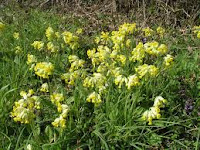This fig tree grows in the tropics, from Northern India and Pakistan Queensland Australia Indonesia Philippines
 It is a small tree or a shrub which can grow to heights of 25 metres. White or yellowy dots appear on the skin of the figs when they are ripe. The latex from the tree is usually yellow and this is used in traditional medicine in the
It is a small tree or a shrub which can grow to heights of 25 metres. White or yellowy dots appear on the skin of the figs when they are ripe. The latex from the tree is usually yellow and this is used in traditional medicine in the A decoction is made from the roots of this fig tree which is used as a diuretic, while the roots are boiled or heated and used as a poultice for boils and other skin eruptions. The fresh leaves are used to promote sweating during fevers, and are also used to get rid of headaches. They are also laid on places where rheumatic pains are.
Medical research has found that the stem bark is active against tumour cells and leaf extracts have antimicrobial and cytotoxicity actions. This evidence is published in the Journal of Medicinal Plants Research, Vol.4, January 2010, “Antimicrobial activity, cytotoxicity and phytochemical screening of Ficus septica Burm. and Sterculia foetida L. leaf extracts” Pierangeli G. Vital et al. which concludes that extracts from the leaves have “potential to be developed as an anticancer agent in breast cancer.”
 In another report, “Ethanolic extract fractions of Indonesian plant Ficus septica Burm. F. on human breast cancer T47D cell lines” Agung Endro Nugroho et al. International Journal of Phytomedicine Vol3 2011 pp216-226 in which cytotoxicity is reported in alkaloids from the roots.
In another report, “Ethanolic extract fractions of Indonesian plant Ficus septica Burm. F. on human breast cancer T47D cell lines” Agung Endro Nugroho et al. International Journal of Phytomedicine Vol3 2011 pp216-226 in which cytotoxicity is reported in alkaloids from the roots. More research is clearly needed to discover exactly how the extracts from this particular fig tree can help in our fight against cancer.


















